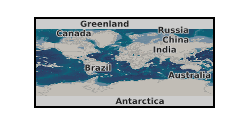MATLAB files
Type of resources
Topics
Keywords
Contact for the resource
Provided by
Years
Formats
Update frequencies
-
This code: (1) Generates data for the weak-selection mathematical model. This is contained in the "Generate_data_for_island_model_weak_selection" script. (2) Generates data for the agent-based simulation model, which accounts for stronger selection and finite populations. This is contained in the "Generate_data_for_agent_based_simulation" script. (3) Generates data for the version of the agent-based simulation model where there is no tag mutation, in which balancing selection is examined via tag fixation times. This is contained in the "Generate_data_for_balancing_selection_finite_pop" script.
-
This code: (1) Generates equilibrium genotype frequency values. This is provided in the "Script_to_generate_equilibrium_genotype_frequencies.m" script. (2) Tests our relatedness expression with simulated data. This is provided in the "Comparison_of_simulated_and_expected_relatedness.m" script. Full details about this application can be found at https://doi.org/10.5285/07af78a7-4022-43b1-b85f-b31caf596362
-

These data represent a series of analyses exploring the seismic behaviours of low-cohesion volcanic sediments – in this case the Neapolitan Yellow Tuff - under varying strain rates. The data include deformation logs from triaxial compression experiments, and the accompanying 12-channel acoustic emission recordings at 10 MHz. These are paired with X-Ray Computed Tomography images of one of the cores from both before and after deformation, to examine damage behaviour. These data include: Deformation logs captured from the triaxial press Acoustic emission event data Processed acoustic emission sonograms for selected events Matlab code for processing of sonograms Matlab code for statistical analysis of the acoustic emission data Before and after X-Ray Computed tomography data for a core which underwent 2% strain at a rate of 4x10-6 s-1. These data relate to Rowley et al - Deformation controlled Long-Period seismicity in low cohesion volcanic sediments https://doi.org/10.31223/osf.io/7rkzv
 NERC Data Catalogue Service
NERC Data Catalogue Service